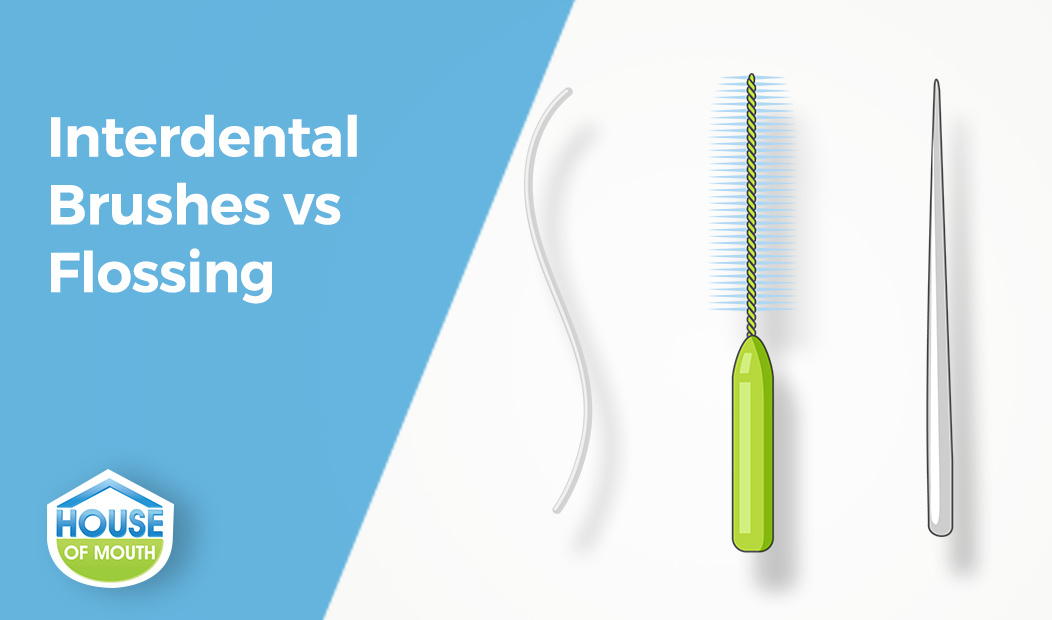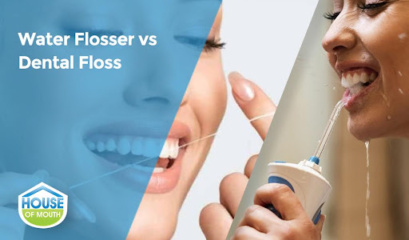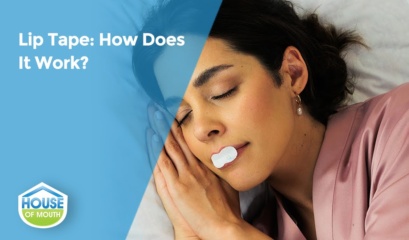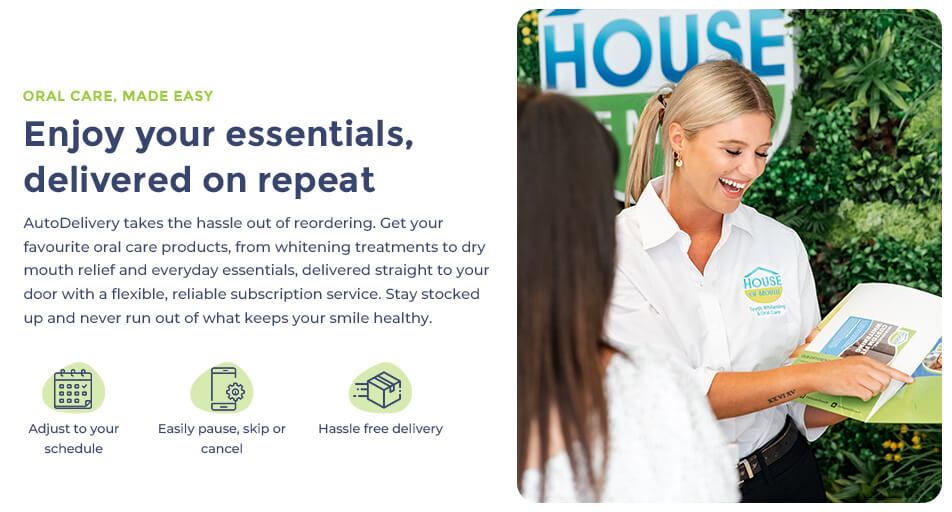One question that many dentists get from their patients is this, “Interdental brush vs floss, which is better?”. The fact is that brushing alone cleans your teeth surfaces, yet it is not enough to achieve optimum teeth, gum, and oral health.
Teeth brushing alone cannot reach between the tooth surfaces, that’s why adopting another tooth-cleaning technique is necessary. Flossing or using interdental brushes in addition to regular teeth brushing will help you take better care of your teeth, reduce bad breath, prevent cavities between the teeth and reduce the chance of bleeding gums or periodontal disease.
In this post, we’ll be discussing the answers to questions like:
- What is an interdental brush?
- What is flossing, and what does it involve?
- Why do I need to floss?
- What are the advantages and disadvantages of interdental brushes?
- What are the advantages and disadvantages of dental floss?
- Interdental brushes or floss; which is better?
What are Interdental Brushes and What Do They Do?
Interdental brushes are brushes with small bristled heads that are designed to clean between your teeth. They help to prevent gum disease by getting rid of pieces of food and plaque from between your teeth that your toothbrush can’t.
With interdental brushes, you can clean the sides of your teeth and between your teeth, no matter how tight or wide the space. There are many Interdental Brush brands including Piksters, Curasept, Caredent, Colgate, Oral B and TePe. Most are equally effective and it often comes down to personal preference as to which brand is preferred.
There are wires that hold the bristles on an interdental brush. These wires, shaped like those on a mascara stick, are attached to a handle that looks like a short toothbrush handle. They come in different bristle and wire widths to fit the different sizes of the gaps in between the teeth. Brushes can be used with orthodontic braces and makes flossing much easier during orthodontic treatment.
How to Use an Interdental Brush
A good practice is to clean your teeth with interdental brushes at least once a day before brushing.
To use an interdental brush, first, you have to select an interdental brush that is appropriate for the size of the space between your teeth. This means that you may need to use more than one size if the spaces between your teeth aren’t the same. Many brands include Trial or Starter Packs which contain a variety of sizes to help you select the sizes you need.
Once you have found the appropriate size, insert the brush gently between two teeth and softly move the brush back and forth. This dislodges and removes any food particles and bacteria that can cause plaque and tartar. Work the interdental brush round the whole of your mouth so that you don’t miss any of the spaces
Do not force the brush into any space between your teeth. Instead, try a smaller brush size if one feels too tight. Your gums may be tender and bleed a little as you start using interdental brushes to get rid of any plaque build-up.
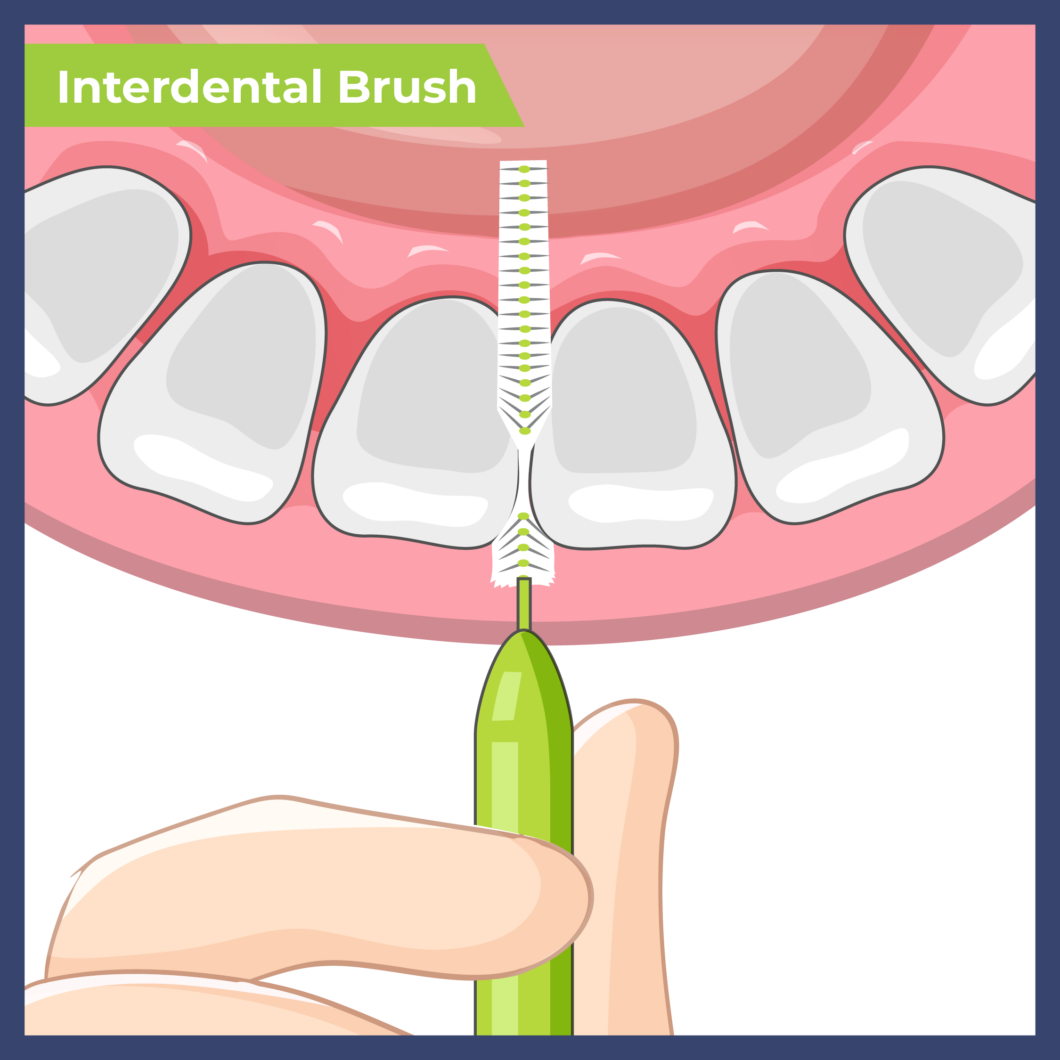
Don’t worry about the initial bleeding. Keep using the brush, and the bleeding should reduce as your gums become healthier. If your bleeding does not reduce with time, then you may need to see a dentist.
Interdental brushes can be used 2-3 times, rinsed after each use and discarded once the brush becomes tattered, bent or worn.
What are the Advantages of Interdental Brushes?
These are the advantages of using interdental brushes:
- They are much easier to use than floss
- Interdental brushes reduce plaque and gingivitis
- Interdental brushes are extremely beneficial to people with limited hand and finger dexterity, like those suffering from joint issues like arthritis and the elderly.
- They are a better choice for people with braces as the thin brushes can navigate the metal wiring easily.
- You can use most interdental brushes a few times before you discard them.
What are the Disadvantages of Interdental Brushes?
The disadvantages of interdental brushes include the following:
- They can cause occasional bleeding of the gums.
- They are harder to find and purchase than floss
- They are more expensive
- Finding the correct size can be difficult at first
What is Floss and What Does Flossing Do?
Floss is a soft yet strong, waxed or unwaxed thread. This thread is usually made of nylon or silk, and it is used to clean areas that are difficult to reach with a toothbrush. Flossing is a procedure that involves drawing floss between the teeth and underneath the gumline to remove food particles and prevent the buildup of plaque. There are many brands of floss including Colgate, Oral B, Piksters, Caredent and iDontix.
Even though you should brush your teeth twice a day, flossing should be done once in a 24 hour period. You can floss whenever you find the time to do so. It is good to floss in the evening so that you can remove the food particles from the day’s meals.
However, the floss may lose its potential cleaning efficiency after a single use, and it may redeposit the bacteria back in the mouth. In light of this, it is advisable to use a piece of floss only once. You should also use longer pieces of floss, around 30-40cm as this will make your flossing efforts easy.
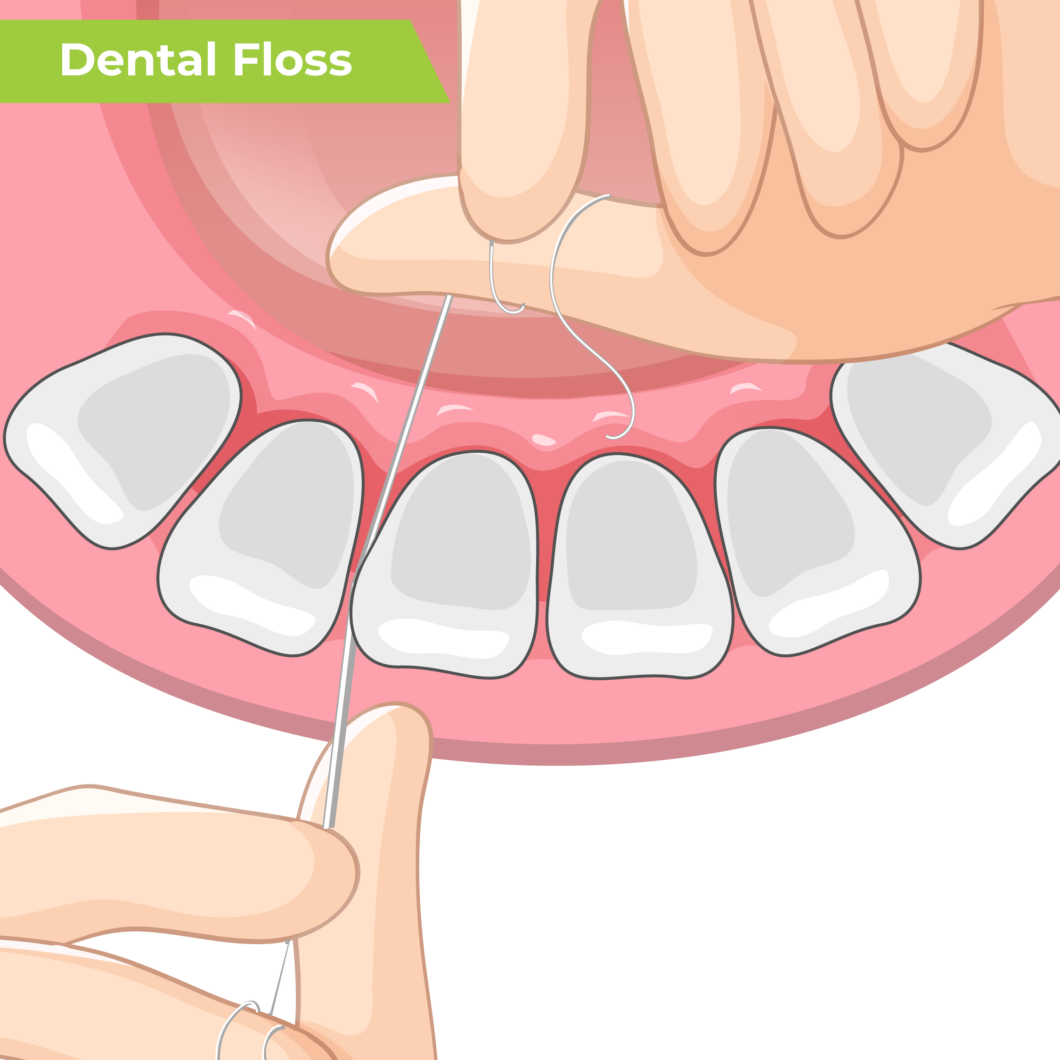
To use it, you have to hold the thread taut between your fingers and insert it in the gaps between your teeth. Form a C shape, hugging one side of a tooth, then slide the floss in an upward movement rubbing both sides of each tooth. Continue this way in a regular pattern, and try not to miss any side or plane.
Some floss comes with a handle, and those are more convenient to use.
Advantages of Flossing
The advantages of flossing include:
- Dental floss is less expensive than interdental brushes
- Floss is good for fitting into very tight spaces
- Reaches underneath the gum line, unlike interdental brushes
- Floss is cheaper than interdental brushes
- It is easier to find floss because it is more common than interdental brushes
- Unlike interdental brushes, floss comes in a wider variety of materials, shapes, flavours, and kinds that you can choose from
Disadvantages of Flossing
Disadvantages of flossing include:
- Some floss can tear if you use it in tight spaces
- It can be time-consuming to clean every tooth correctly using floss
- It is more difficult to clean teeth with braces using floss
Why Use an Interdental Brush over Floss
It is very important to clean between the teeth to ensure that you get rid of food particles and plaque. The goal is to clean between the teeth, no matter how small the space is. The best practice is to combine interdental brushes and floss with daily brushing.
Interdental brushes do similar work as floss. They both reduce plaque and help to get rid of food particles lodged between the teeth that can cause tooth decay and cavities. While flossing is a more traditional and common method, there are many situations where interdental brushes are a more convenient option.
Interdental brushes are easy to use and remove plaque very well. A portion of the mouth still remains unreachable with floss, however, due to the larger width of interdental brushes they cover all the in-between spaces in the mouth more efficiently. But where the gaps in your teeth are too hard to clean with an interdental brush, then you should go for a floss, such as underneath the gum line and tilted teeth.
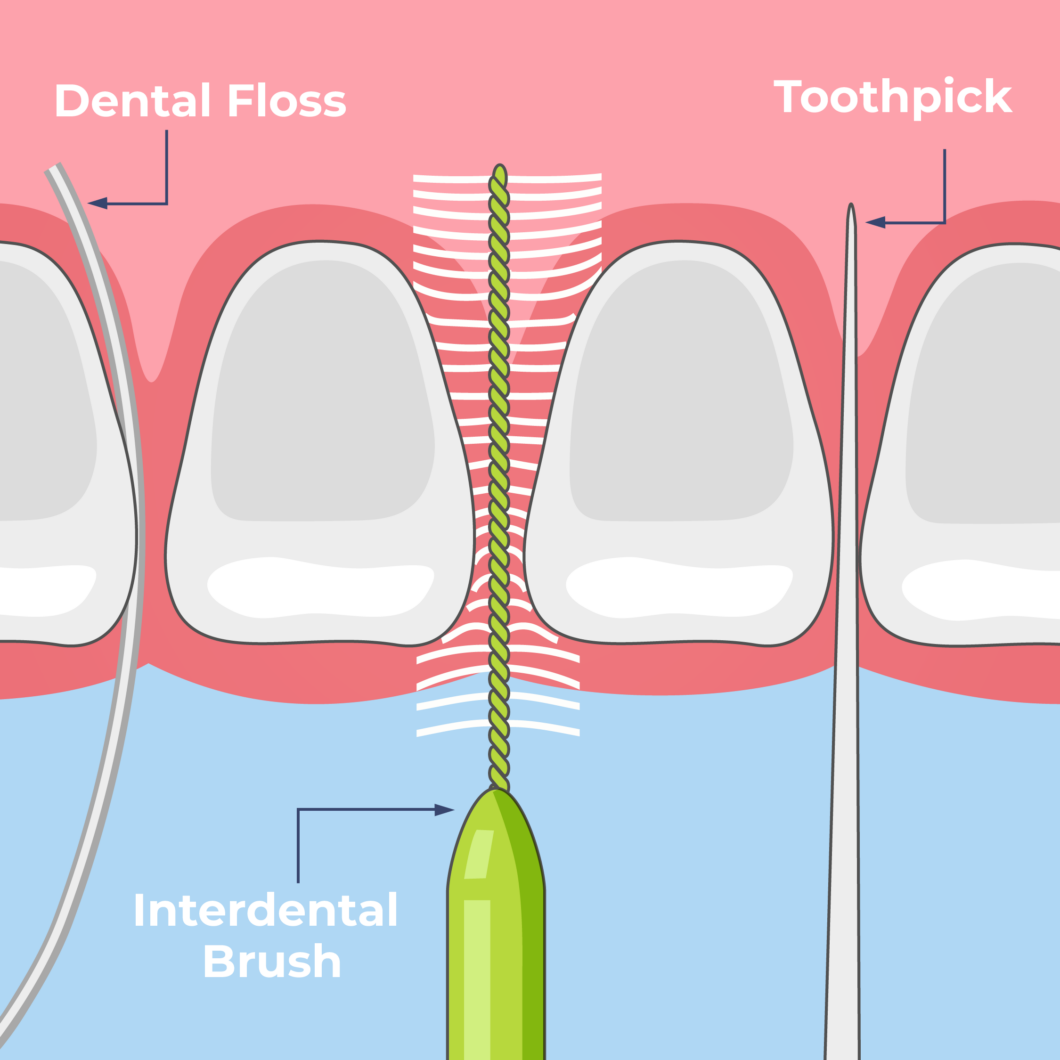
Interdental brushes are also more comfortable to use for cleaning dentures, bridges, implants, and gums. If you have braces, interdental brushes are a better choice. It can be a bit challenging to use floss around braces.
Floss is economical. So if you’re looking to save some cents, go for floss. Also, some people are already used to the more common flossing. If you are such a person, then you can stick with flossing.
The most important thing to note is that everyone should be doing some sort of interdental cleaning beyond just brushing their teeth daily.
Where To Buy Interdental Brushes and Floss Online
Both interdental brushes and floss have their own unique advantages and are useful in different situations. Utilising a combination of interdental brushes and floss on a weekly basis is best practice, rather than using one or the other. As such, choosing either interdental brushes or dental floss is basically a matter of personal preference and depends on a person’s oral circumstances.
Assess both flossing and interdental brushing, and determine which option is best for you – everyone’s circumstances are different and unique.Whichever you pick, make sure you are cleaning between your teeth daily.
At The House of Mouth, we have options and can help you make your interdental cleaning decision. We have a range of interdental brushes in different sizes. We also have products that are specially designed for people with braces.
Whether you are going for interdental brushing or flossing, we have got you covered. We offer a large range of handpicked professional-grade teeth whitening and oral care products. Our products are the best quality in the dental field; recommended, used, and sold by dental practitioners worldwide.
You can get them online, have them shipped or do a “click and collect” service if you are a local Gold Coast customer. Our services are Australia wide and worldwide.
If you want the best when it comes to your oral hygiene, then don’t delay. Contact us at House of Mouth today so we can get your Interdental Cleaning on track.
Oral Health and Product Advice
Have questions about the products recommended to you by your Dental Professional or need help selecting a product suited to your needs – one of our Dental Professionals will be more than happy to help – Contact Us today.


